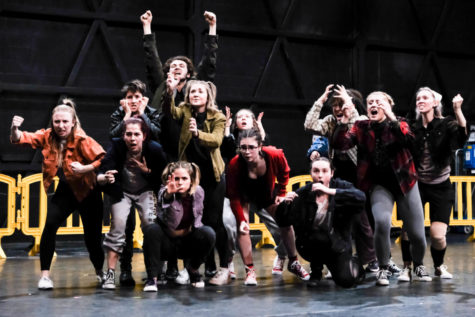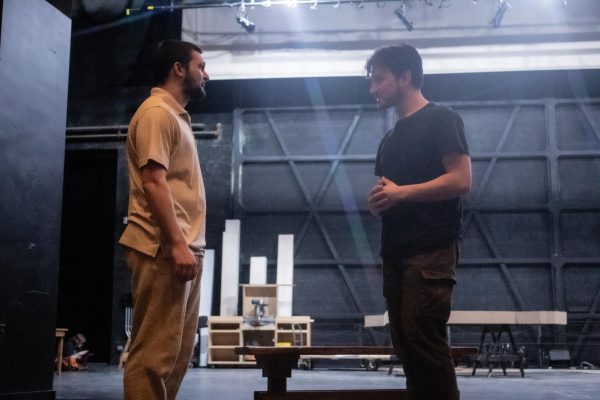BW Dance Brings Revelry and Riot to Kleist Stage
Baldwin Wallace’s annual dance concert “Fyoo zh en” returned to the Mainstage Theatre the weekend of Feb. 23, asking audiences the question: Revelry or Riot?
“Fyoo zh en” is a collaboration between the BW dance program and a BW professor, in which the professor’s research in a particular area is translated into movement. Sara Whale, Assistant Professor of Dance, directs this concert, and she is accompanied by both undergraduate and graduate student choreographers.
This year’s concert, “fyoo zh en ’22: Revelry or Riot”, is based on the research of Dale Sheptak, associate professor and associate dean of graduate business programs. His research focuses on crowd dynamics, particularly in the context of sport games. Crowds are rowdy, but there is a point where that rowdiness may turn into violence. This is translated in the dance choreography.
Whale said this year’s concert is the “summed up idea of the fine line between crowd celebration at sports events being celebratory or turning into violence.”
The concert was mostly devoted to crowd dynamics in soccer, both on and off the pitch, but there were also pieces that touched on airport and concert crowds. Near the end of the concert, there was a piece about social distancing and how people were no longer supposed to engage in crowds. 
“[‘Revelry or Riot’] is based on this research, but there’s not a story,” Whale said. “There is not a narrative for this.”
Annaliese Tuma, a senior Theater Dance and Movement major, is one of the student choreographers and dancers in “Revelry or Riot.” She said her process involved reading Sheptak’s research and focusing on specific words or phrases within the text.
“Once I got an idea from the research,” Tuma said, “I would work on making up phrases out of that and gain an overall idea of what I wanted my pieces to look like.”
One of Tuma’s pieces, “Warming Up?”, dealt with two opposing soccer teams getting ready for their game. Tuma said that there is conflict within the team itself, as displayed through “sharp” and “energetic” movements, but the players are able to come together as a team to play the game.
Throughout the show, the dancers engage in crowds that lead to tragedy, until they can no longer be in crowds. And, once they can engage in crowds again, the cycle may repeat itself.
“Crowds are a big part of our human life,” first-year dancer Rachel Korba said. “But there is always a line that tends to be crossed. When do we hold back?”
This is the first time “fyoo zh en” was performed live since the COVID-19 pandemic began. Whale said that the company is excited to be able to dance for an audience again because there is something “very magic about actually having bodies in the theatre.”
The audience and those involved in the development and performance of “Revelry or Riot?” were able to experience Sheptak’s research in a non-traditional manner. Audiences were exposed to this research through the medium of dance, which provided a new level of understanding of the research.
“When you read research, you don’t really feel things,” Korba said. “To be able to take confusing articles that they write and create them into feelings and emotions it super cool.”
“Fyoo zh en” will return to Baldwin Wallace next year, but until then, there are many opportunities to experience live theater. For more events, visit https://www.bw.edu/events/theatre-dance/.
The Exponent is looking for financial contributions to support our staff and our newsroom in producing high-quality, well-reported and accurate journalism. Thank you for taking the time to consider supporting our student journalists.












































